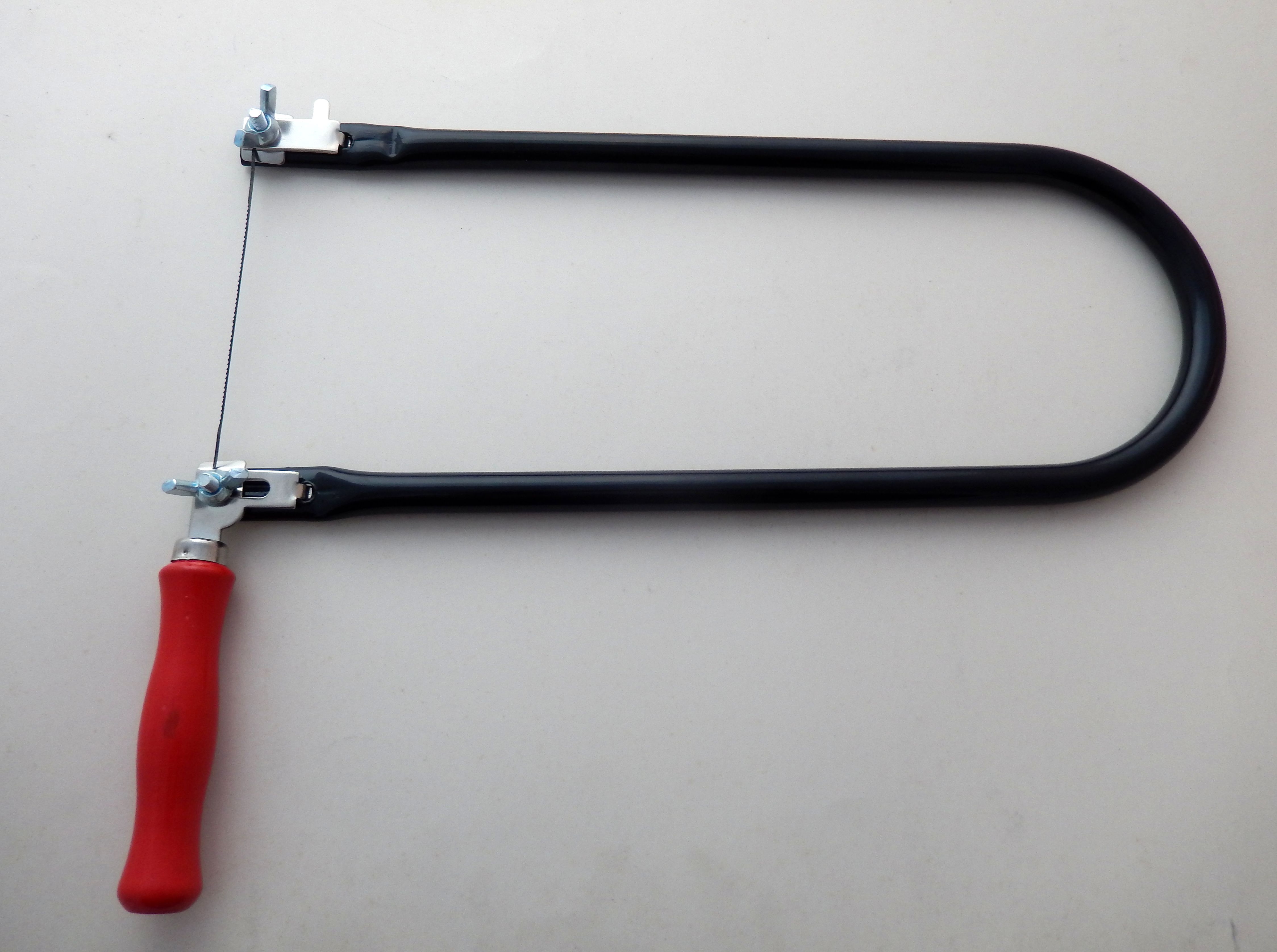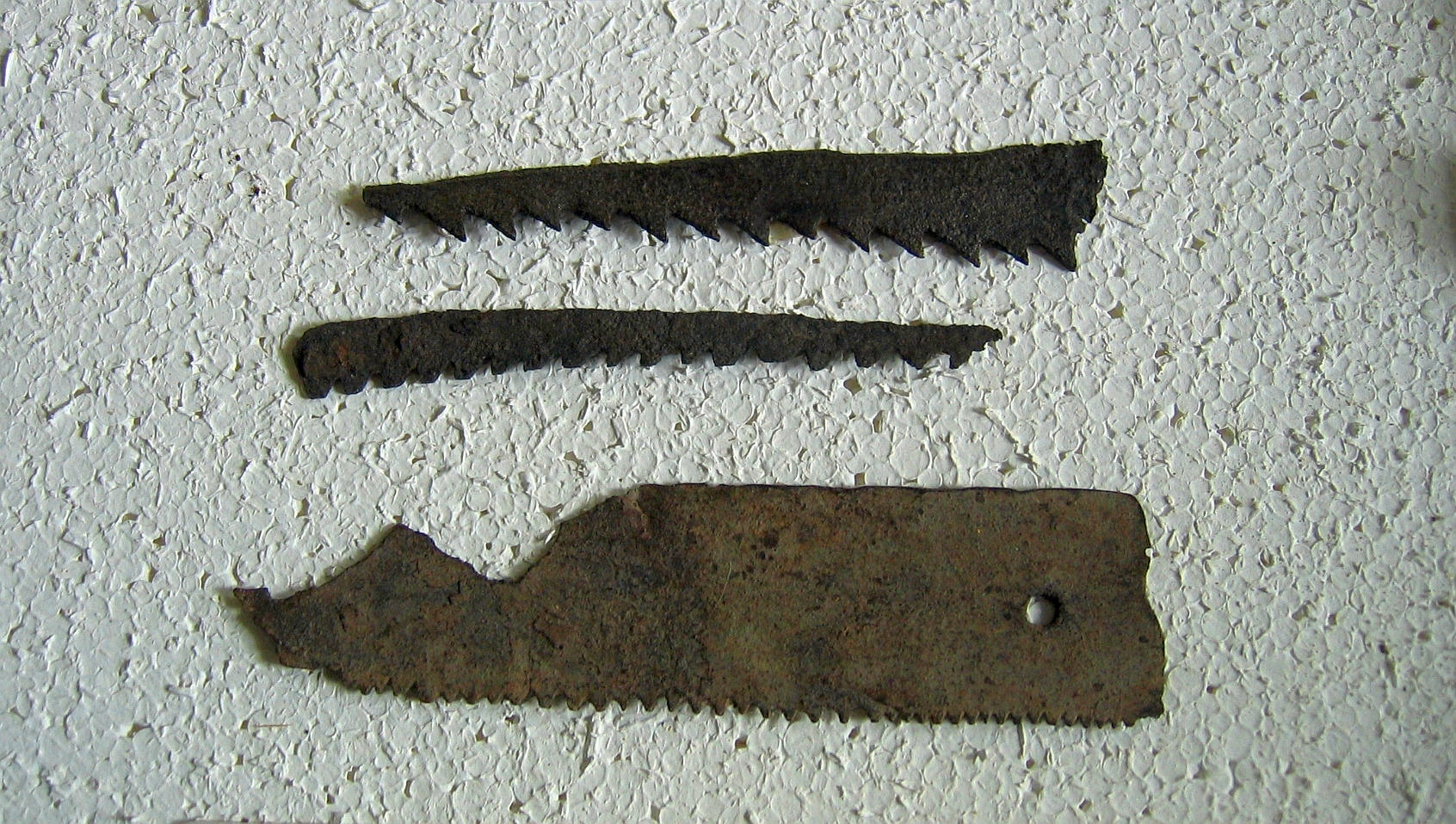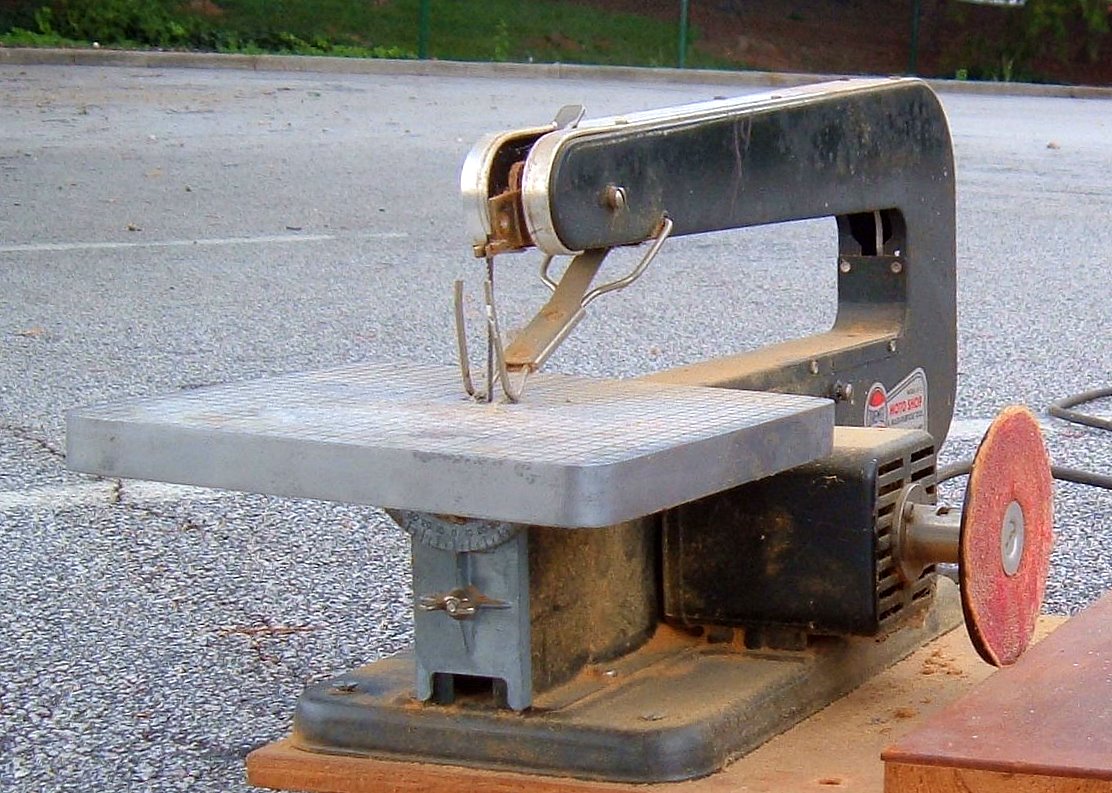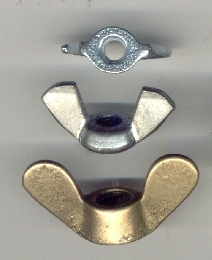|
Fretsaw
The fretsaw is a bow saw used for intricate cutting work which often incorporates tight curves. Although the coping saw is often used for similar work, the fretsaw is capable of much tighter radii and more delicate work. It has a distinctive appearance due to the depth of its frame (typically between ), which together with the relatively short blade makes this tool appear somewhat out of proportion compared with most other saws. Compared with the coping saw it has much shallower blades, which are usually extra-fine, up to . This allows much tighter curves to be cut—with many blades even sharp corners are possible—but the blades are also much more fragile compared with that of a coping saw. Unlike the coping saw, the blade has a fixed orientation in relation to the frame. This means that the fretsaw is less useful when cutting long narrow components, but the increased depth of the frame does allow access much further from the edge of the board. The fretsaw is similar in many ... [...More Info...] [...Related Items...] OR: [Wikipedia] [Google] [Baidu] |
Kerf
A saw is a tool consisting of a tough blade, wire, or chain with a hard toothed edge. It is used to cut through material, very often wood, though sometimes metal or stone. The cut is made by placing the toothed edge against the material and moving it forcefully forth and less vigorously back or continuously forward. This force may be applied by hand, or powered by steam, water, electricity or other power source. An abrasive saw has a powered circular blade designed to cut through metal or ceramic. Terminology * Abrasive saw: A saw that cuts with an abrasive disc or band, rather than a toothed blade. * Back: the edge opposite the toothed edge. * Fleam: The angle of the faces of the teeth relative to a line perpendicular to the face of the saw. * Gullet: The valley between the points of the teeth. * Heel: The end closest to the handle. * Kerf: The narrow channel left behind by the saw and (relatedly) the measure of its width. The kerf depends on several factors: the width ... [...More Info...] [...Related Items...] OR: [Wikipedia] [Google] [Baidu] |
Coping Saw
A coping saw is a type of bow saw used to cut intricate external shapes and interior cut-outs in woodworking or carpentry. It is widely used to cut moldings to create coped rather than mitre joints. It is occasionally used to create fretwork though it is not able to match a fretsaw in intricacy of cut, particularly in thin materials. Coping saw blades are always thicker and much coarser cutting than typical fretsaw blades and many others of its family members. Coping saws can however cut slight bends in the work, allowing circles to be cut if used carefully. History The coping saw was most likely invented in middle of the 16th century following innovations in metallurgy and with the invention of the spring-driven clock. Blades made of this material were strong and flexible thanks to rolling. This saw was also used in combination with so called ''Chevalet du Marqueterie'', invented in 1780, allowing to saw pack of veneers with one angle of cut. Construction A coping saw ... [...More Info...] [...Related Items...] OR: [Wikipedia] [Google] [Baidu] |
Saws
A saw is a tool consisting of a tough blade, wire, or chain with a hard toothed edge. It is used to cut through material, very often wood, though sometimes metal or stone. The cut is made by placing the toothed edge against the material and moving it forcefully forth and less vigorously back or continuously forward. This force may be applied by hand, or powered by steam, water, electricity or other power source. An abrasive saw has a powered circular blade designed to cut through metal or ceramic. Terminology * Abrasive saw: A saw that cuts with an abrasive disc or band, rather than a toothed blade. * Back: the edge opposite the toothed edge. * Fleam: The angle of the faces of the teeth relative to a line perpendicular to the face of the saw. * Gullet: The valley between the points of the teeth. * Heel: The end closest to the handle. * Kerf: The narrow channel left behind by the saw and (relatedly) the measure of its width. The kerf depends on several factors: the width ... [...More Info...] [...Related Items...] OR: [Wikipedia] [Google] [Baidu] |
Bow Saw
A modern bow saw is a metal-framed crosscut saw in the shape of a bow with a coarse wide blade. This type of saw is also known as a Swede saw, Finn saw or bucksaw. It is a rough tool that can be used for cross-cutting branches or firewood, up to in diameter. The name 'Swede saw' probably derived from the ovate metal tubular frame version, invented in the 1920s by the Swedish company Sandvikens Jernverk, and additional patents by two Swedish immigrants to the US. Modern versions all share those common features. Traditionally, a bow saw is a woodworking tool used for straight or curved cuts. A bow saw is a type of frame saw. Its thin blade is held in tension by a frame. In English and American vocabulary it denotes a toothed blade suspended between two long narrow handles called "cheeks" that are supported and separated by a thin stretcher in the center of the handles, making a wide H shape (the cheeks form the uprights of the H, the stretcher the crossbar of the H). The blade i ... [...More Info...] [...Related Items...] OR: [Wikipedia] [Google] [Baidu] |
Scroll Saw
A scroll saw is a small electric or pedal-operated saw used to cut intricate curves in wood, metal, or other materials. The fineness of its blade allows it to cut more delicately than a power jigsaw, and more easily than a hand coping saw or fretsaw. Like those tools, it is capable of creating curves with edges, by pivoting its table. The scroll saw's name derives from its traditional use in making scrollwork, sculptural ornaments which prominently featured scroll-head designs. Advantages While somewhat similar to a band saw, a scroll saw uses a reciprocating blade rather than a continuous loop. Like a hand coping saw, the scroll saw's blade can be removed and placed through a pre-drilled starting hole, allowing interior cutouts to be made without an entry slot. Also, the fineness in both width and tooth count of a scroll's blade permits significantly more intricate curves than even the narrowest gauge band-saw blade. The majority of scroll saws offer a small light on a flex ... [...More Info...] [...Related Items...] OR: [Wikipedia] [Google] [Baidu] |
Fretwork
Fretwork is an interlaced decorative design that is either carved in low relief on a solid background, or cut out with a fretsaw, coping saw, jigsaw or scroll saw. Most fretwork patterns are geometric in design. The materials most commonly used are wood and metal. Fretwork is used to adorn furniture and musical instruments. The term is also used for tracery on glazed windows and doors. Fretwork is also used to adorn/decorate architecture, where specific elements of decor are named according to their use such as eave bracket, gable fretwork or baluster fretwork, which may be of metal, especially cast iron or aluminum. Installing elaborate wooden fretworks on residential buildings, known as gingerbread trims, became popular in North America in the late 19th century. Fretwork patterns originally were ornamental designs used to decorate objects with a grid or a lattice. Designs have developed from the rectangular wave Greek fret to intricate intertwined patterns. A common mi ... [...More Info...] [...Related Items...] OR: [Wikipedia] [Google] [Baidu] |
Oxford English Dictionary
The ''Oxford English Dictionary'' (''OED'') is the first and foundational historical dictionary of the English language, published by Oxford University Press (OUP). It traces the historical development of the English language, providing a comprehensive resource to scholars and academic researchers, as well as describing usage in its many variations throughout the world. Work began on the dictionary in 1857, but it was only in 1884 that it began to be published in unbound fascicles as work continued on the project, under the name of ''A New English Dictionary on Historical Principles; Founded Mainly on the Materials Collected by The Philological Society''. In 1895, the title ''The Oxford English Dictionary'' was first used unofficially on the covers of the series, and in 1928 the full dictionary was republished in 10 bound volumes. In 1933, the title ''The Oxford English Dictionary'' fully replaced the former name in all occurrences in its reprinting as 12 volumes with a one ... [...More Info...] [...Related Items...] OR: [Wikipedia] [Google] [Baidu] |
Moment (physics)
In physics, a moment is a mathematical expression involving the product of a distance and physical quantity. Moments are usually defined with respect to a fixed reference point and refer to physical quantities located some distance from the reference point. In this way, the moment accounts for the quantity's location or arrangement. For example, the moment of force, often called torque, is the product of a force on an object and the distance from the reference point to the object. In principle, any physical quantity can be multiplied by a distance to produce a moment. Commonly used quantities include forces, masses, and electric charge distributions. Elaboration In its most basic form, a moment is the product of the distance to a point, raised to a power, and a physical quantity (such as force or electrical charge) at that point: : \mu_n = r^n\,Q, where Q is the physical quantity such as a force applied at a point, or a point charge, or a point mass, etc. If the quantity ... [...More Info...] [...Related Items...] OR: [Wikipedia] [Google] [Baidu] |
Wingnut (hardware)
A wingnut, wing nut or butterfly nut is a type of nut with two large metal "wings", one on each side, so it can be easily tightened and loosened by hand without tools. A similar fastener with a male thread is known as a wing screw or a wing bolt. Types ASME B18.6.9 classifies wing nuts first by manufacturing method and then by style. * Type A are cold forged or cold formed produced in regular, light and heavy dimensional series. * Type B are hot forged solid nuts available in three different wing styles. * Type C are die cast nuts available in three wing styles with variances between regular and heavy dimensional series * Type D are stamped sheet metal nuts available in three wing styles. Usage Bicycles Before the development of quick release skewers, bicycle wheels were held in place with wingnuts. Drum hardware In a drum kit wingnuts and wingbolts are used extensively. * For securing a suspended cymbal on the mounting bolt of a cymbal stand. * For securing an adjustment ... [...More Info...] [...Related Items...] OR: [Wikipedia] [Google] [Baidu] |
Wrench
A wrench or spanner is a tool used to provide grip and mechanical advantage in applying torque to turn objects—usually rotary fasteners, such as nuts and bolts—or keep them from turning. In the UK, Ireland, Australia, and New Zealand ''spanner'' is the standard term. The most common shapes are called ''open-ended spanner'' and ''ring spanner''. The term ''wrench'' is generally used for tools that turn non-fastening devices (e.g. tap wrench and pipe wrench), or may be used for a monkey wrench—an adjustable pipe wrench. In North American English, ''wrench'' is the standard term. The most common shapes are called ''open-end wrench'' and ''box-end wrench''. In American English, ''spanner'' refers to a specialized wrench with a series of pins or tabs around the circumference. (These pins or tabs fit into the holes or notches cut into the object to be turned.) In American commerce, such a wrench may be called a ''spanner wrench'' to distinguish it from the British se ... [...More Info...] [...Related Items...] OR: [Wikipedia] [Google] [Baidu] |
Torque
In physics and mechanics, torque is the rotational equivalent of linear force. It is also referred to as the moment of force (also abbreviated to moment). It represents the capability of a force to produce change in the rotational motion of the body. The concept originated with the studies by Archimedes of the usage of levers, which is reflected in his famous quote: "''Give me a lever and a place to stand and I will move the Earth''". Just as a linear force is a push or a pull, a torque can be thought of as a twist to an object around a specific axis. Torque is defined as the product of the magnitude of the perpendicular component of the force and the distance of the line of action of a force from the point around which it is being determined. The law of conservation of energy can also be used to understand torque. The symbol for torque is typically \boldsymbol\tau, the lowercase Greek letter '' tau''. When being referred to as moment of force, it is commonly denoted by . ... [...More Info...] [...Related Items...] OR: [Wikipedia] [Google] [Baidu] |



.jpg)



